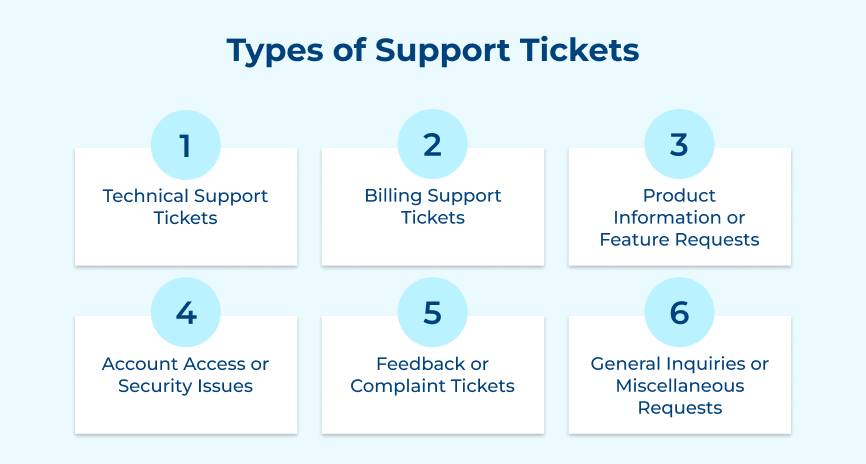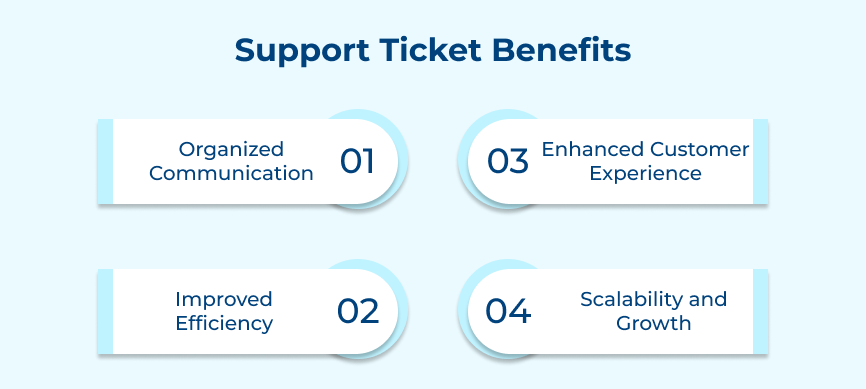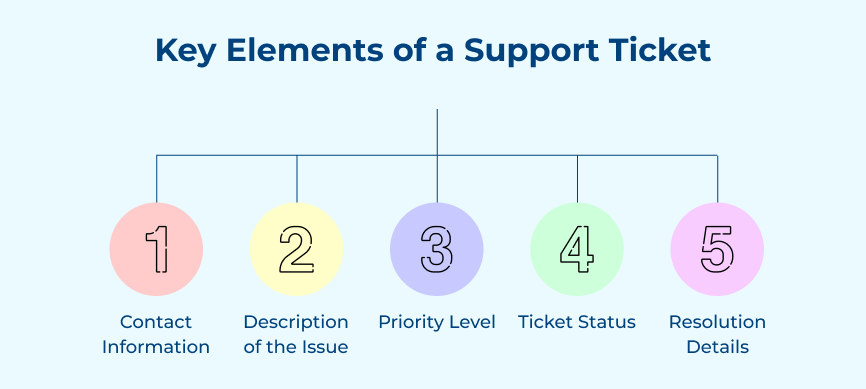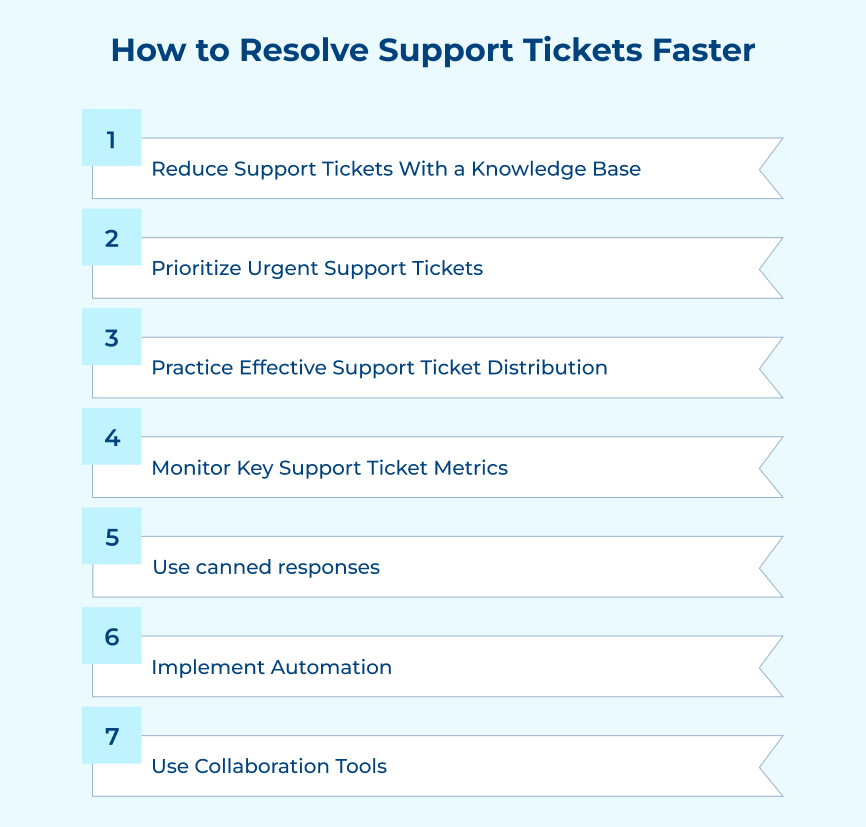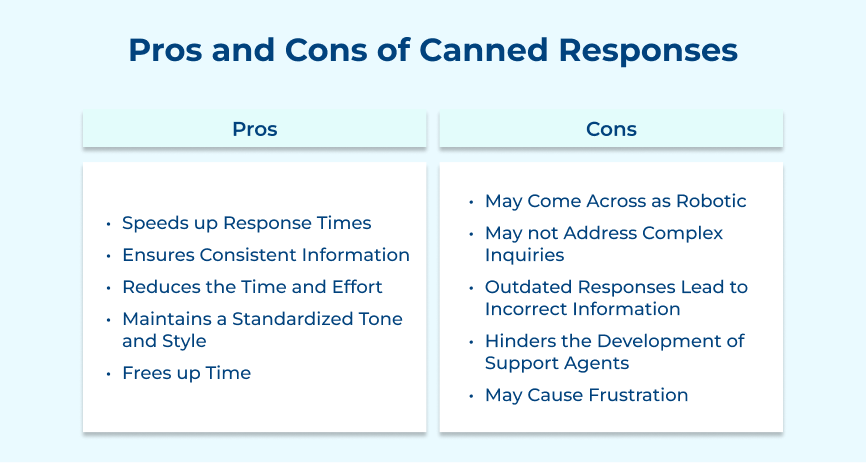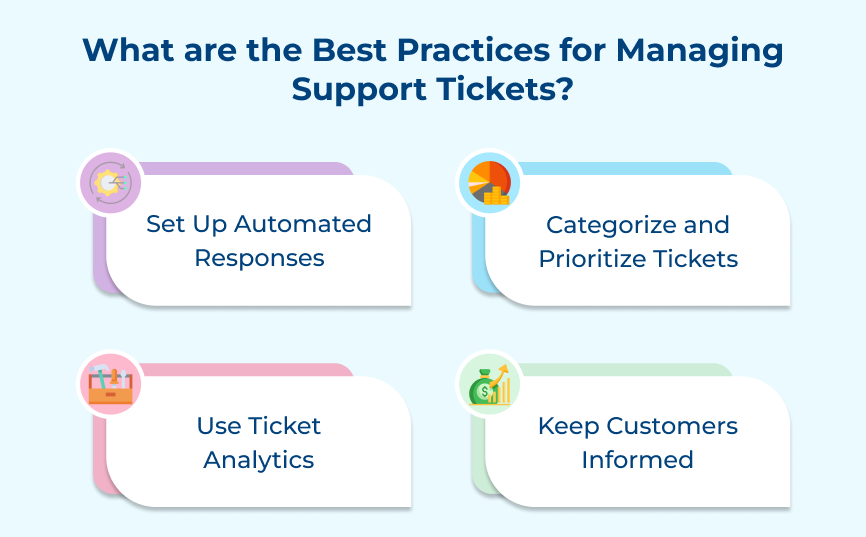1. Contact Information
Contact information is a crucial element of a support ticket as it allows the helpdesk team to easily reach out to the customer for further clarification or updates. Accurate contact information ensures prompt customer reach, speeding up issue resolution. Without proper contact information, the helpdesk team may face delays in resolving the problem.
Contact information in a support ticket should include the customer’s name, email, phone number and relevant details. The information is crucial for effective communication between customers and the support team, enhancing quality customer service.
2. Description of the Issue
When submitting a support ticket, providing a clear and detailed description of the issue is crucial. The description should cover the business problem, any error messages, troubleshooting steps and relevant details to resolve the issue. Insufficient details can hinder support agents from promptly grasping and resolving issues, causing delays.
The importance of a detailed description lies in its ability to provide support agents with the necessary information to diagnose and solve the issue quickly. It ensures all parties understand the issue, reducing miscommunication risks. The description serves as a key element of a support ticket, contributing significantly to the effectiveness of the support process.
3. Priority Level
Priority level is a key element of a support ticket, indicating the urgency and importance of the issue at hand. It helps support teams prioritize their workload and ensure that critical issues are addressed promptly. Assigning a priority level to each ticket can help support teams effectively allocate their resources and provide timely assistance to customers. Failure to prioritize properly may result in overlooked issues, customer dissatisfaction and negative feedback.
Understanding the significance of priority levels in support tickets is crucial for maintaining customer satisfaction and delivering quality service. Support teams should prioritize tickets based on the impact on the customer and the business, ensuring that urgent issues are addressed promptly.
4. Ticket Status
When it comes to managing customer support, one of the key elements of a support ticket is the “Ticket Status.” It refers to the current state of the ticket, whether it is open, pending, resolved, or closed. The importance of ticket status cannot be understated, as it helps support teams prioritize and track customer issues effectively. Clearly defining the status of each ticket, can ensure that no customer concern falls through the cracks.
Ticket status serves as a crucial communication tool between support teams and customers, keeping them informed about the progress of their inquiries. Ticket status is crucial for support tickets, offering clarity and transparency in customer support processes.
5. Resolution Details
Resolution details are crucial key elements of a support ticket. They provide a clear explanation of how a particular issue was addressed and resolved by the support team. They help support staff identify patterns, track trends and improve their troubleshooting processes. Resolution details can also be used to update knowledge bases and training materials. It ensures that support teams are equipped to handle similar issues efficiently in the future.
Resolution details provide accountability to both customers and support teams. They demonstrate the efforts made to resolve an issue and showcase the dedication of the support team to providing quality service. Resolution details are essential for effective support ticket management and customer satisfaction.
How to Resolve Support Tickets Faster: 8 Key Strategies
Below are key strategies that can help you resolve support tickets faster, ensuring that your customers feel heard, valued and satisfied.






